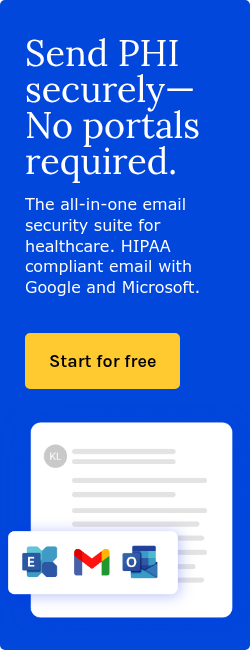2 min read
Streamlining prior authorization with HIPAA compliant forms
Kirsten Peremore
January 15, 2025

Using electronic HIPAA compliant forms through platforms like Paubox introduces automation into the prior authorization process. Automation minimizes manual errors and accelerates data processing to allow for quicker decisions from insurance companies. As a result, patients gain faster access to treatments when time is of the essence.
The benefits of a streamlined prior authorization process
The prior authorization process is designed to ensure that patients receive necessary medical services. According to a New England Journal of Medicine study, “Improving prior authorization is an important policy priority. Electronic prior authorization could offer needed relief from administrative burdens, but its implications for systemwide efficiencies remain uncertain. Operational design, behavioral responses by providers, and market reactions to increased transparency will determine the consequences of a streamlined prior-authorization system for patient care and societal resources.”
The use of electronic prior authorization systems reduces the administrative burden associated with traditional paper-based methods. These methods often require extensive paperwork and manual processing. Electronic forms minimize the chances of errors that can lead to claim denials and accelerate the approval timeline to allow patients to access treatment faster.
Best practices
- HIPAA compliant forms should be written in plain language, free of jargon, making it easy for patients to understand what they are consenting to. The clarity helps build trust and encourages patients to engage with the process.
- Limit access to protected health information (PHI) based on staff roles within the organization. As a practice, it minimizes the risk of unauthorized disclosures and ensures that only those who need access to information can have it.
- Regular training sessions on HIPAA regulations and the specific use of compliant forms are essential. Staff should be educated on privacy rules, patient rights, and the need to protect PHI during the prior authorization process.
- Use technology to automate the collection and submission of prior authorization requests. Automated systems can reduce errors, speed up processing times, and ensure that all necessary information is included in submissions.
- Schedule periodic audits of your processes to ensure ongoing compliance with HIPAA regulations. It includes reviewing how forms are used, how data is stored, and whether staff are following protocols.
- Create efficient communication pathways between healthcare providers and insurance companies. Clear communication can help resolve issues quickly and reduce delays in prior authorizations.
- Maintain detailed records of all consent forms and communications related to prior authorizations. The documentation is necessary for compliance audits and can be protected in case of disputes about patient consent or data handling.
Related: HIPAA Compliant Email: The Definitive Guide
FAQs
What is informed consent?
Informed consent is a process in which healthcare professionals provide patients with necessary information about treatments, procedures, risks, benefits, and alternatives.
What are the key elements of valid consent?
Valid consent must be voluntary, informed, and given by a person with the capacity to make decisions.
What happens if a patient refuses treatment?
If a patient refuses treatment, their decision must be respected, even if it may lead to serious consequences. Patients have the right to make choices about their healthcare.
Subscribe to Paubox Weekly
Every Friday we'll bring you the most important news from Paubox. Our aim is to make you smarter, faster.




